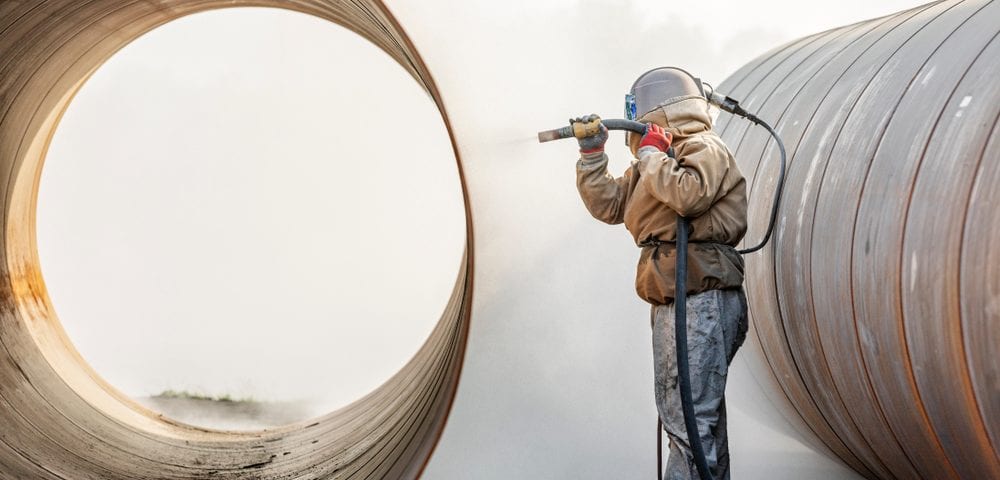How Shot Blasting Helps Clean Metals, Part 2

How Shot Blasting Helps Clean Metals, Part 1
July 17, 2020
Steel Pipe Nominal Size, Scheduling and Differences, Part 1
August 7, 2020In part one of this two-part blog series, we went over some of the basics on the shot blasting process that’s often used to clean and de-oxidize steel and other metals before a given manufacturing process. There are many such manufacturing processes that will be disrupted based on dirt, oxides, mill scale or other debris, but shot blasting will often help remove these imperfections.
At Wasatch Steel, we’ll inform you of the best surface blasting or other method for cleaning any of our steel products that might require it, one of many steel services we offer all our clients. In today’s part two of our series, we’ll look at how the actual shot blasting process works, plus dig into safety considerations and detail the various metals and other materials that may be suitable for shot blasting depending on the circumstance.
Shot Blasting Process
As we touched on in part one, shot blasting takes place when round pellet materials, known as shot media, are propelled against a given surface. This propulsion removes contaminants and helps improve the finish of the surface in question.
As we also noted in part one, both the shot media material and the technology used to propel it will be important, as will the material being cleaned. Shot material and size will be selected based on the composition of the surface metal being blasted into.
In addition, many shot blasting formats also include a recovery system. This system will collect any material shot that’s already been propelled and impacted the cleaned material, returning it to the propelling device so it can be used again. This is generally done using a vacuum attachment or related technology.
Safety Considerations
Those who have not performed shot blasting in the past may be wondering whether it’s safe, and the general answer here is yes – as long as proper safety measures are taken to protect anyone in the area from being impacted by propelled or ricocheted shot media. This process is relatively simple, though.
And actually, shot blasting is considered safer than other forms of abrasive blasting like sandblasting. This is because it comes with far lower or even no dust inhalation risks, often a major concern for other similar processes. While there are simple methods for protecting from such dust in these other formats, shot blasting doesn’t even require taking this step in most cases.
Materials That Can Be Shot Blasted
There are a wide range of metals and even other materials that can be cleaned using shot blasting, including:
- Carbon steel
- Alloy steel
- Stainless steel
- Titanium
- Cast iron
- Copper
- Concrete
- Certain ceramics
For more on the shot blasting process or any of our steel products it might be used on, speak to the staff at Wasatch Steel today.



